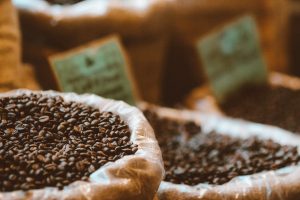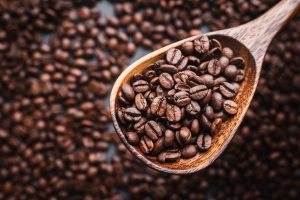Myths and Facts about Fresh Coffee
We all know that to get the best cup of coffee, we have to use fresh, good-quality roasted coffee beans. The prevailing conviction is that anything less than freshly roasted beans is basically stale coffee. But what does fresh coffee really mean? Is there such a thing as too fresh? And how to bring the best flavor out of our preferred roasted coffee? In this post, we will debug some of the myths and facts about fresh coffee beans.
Myth 1: Fresh Is Always Best
Freshly roasted coffee beans still retain Carbon Dioxide (CO2) from the roast process and need to degas for several days. Degassing basically means the release of CO2, usually rapidly at first after roasting, then more gradually over several days. In addition, coffee beans that are just taken out from the roaster machine haven’t really formed structure and the flavor nuances are not yet apparent. All of these factors result in uneven and unpredictable brewing, and most noticeable within a few days after roasting. So it is recommended to wait a few days, up to one week, before using the roasted coffee beans.
Myth 2: Coffee Has An Expiry Date
Coffee doesn’t really expire, but it might not taste as good after an extended period of exposure to oxygen. Generally, coffee roasters believe that coffee still could taste great up to six weeks after roasting, but this period varies between different coffee beans. And if the coffee is stored properly in a cool, dark space without moisture, light or temperature fluctuations, the quality will hold much longer. Also, a dark roast has more degraded cell structures compared to a light roast, making the coffee shelf life shorter. By doing regular cupping sessions for the same coffee bean variety over different ages, roasters can determine the peak window on a particular variety and how it changes over time.
Myth 3: All Coffee Packaging Are The Same
There are many options when it comes to packing coffee, but experts believe that a sealed bag with a one-way valve is the best for allowing the gasses to escape without letting the beans degrade too quickly. A well-sealed valve bag is proven to be the most efficient to keep the coffee bean quality almost intact before brewing it. Some coffee roosters even flush the bag with nitrogen before sealing it, in order to remove the oxygen from the bag.

Fact 1: Read The Label
The roast date on the label provides information in two ways: as a suggestion on how long to wait before brewing the coffee, and also as a guideline to know how long the coffee will hold its flavor, aroma and taste. Some companies also put “best by” dates on the bags to help the customer consume the coffee within its peak window.
Fact 2: There Is Another Kind of Fresh
Coffee beans that aren’t roasted long enough are also called “fresh coffee”. In brewed coffee, this is visible in a crema that is foamy, with large air bubbles that dissolve quickly and stick to the side of the cup.
Fact 3: Freshly Ground Coffee Is Best
Oxygen that causes the bread to go stale, rusts metal, and flattens carbonated drinks, also has an impact on coffee. In fact, coffee beans start oxidising the minute they come out of the roasting machine. Over time, oxidation makes the coffee flavor and aroma degrade until it is practically unpleasant to drink it. For ground coffee, the oxidation rate is higher due to the changed structure, making it far more vulnerable. This is why you should only grind coffee on demand, just before brewing.

What Comes Next?
After carefully selecting your coffee beans, thoughtfully roasting the beans, properly pack, label, and store them, you can almost be certain that the coffee that has had a week to rest after roasting will probably be at its peak for the next 4 weeks (or maybe more). However, don’t be hasty in throwing away “old” coffee. In addition to the coffee itself, the roaster, the roast profile, and the roasting equipment also play a part in the coffee’s freshness. So, experimenting is still a fun part of the coffee trade.


